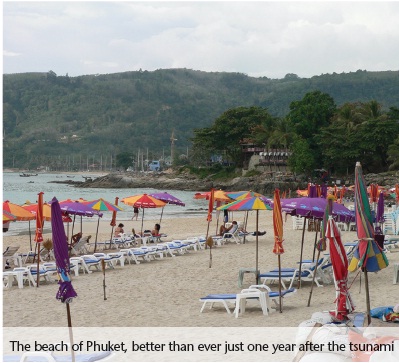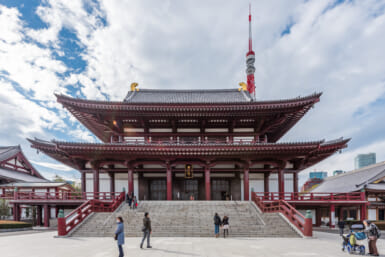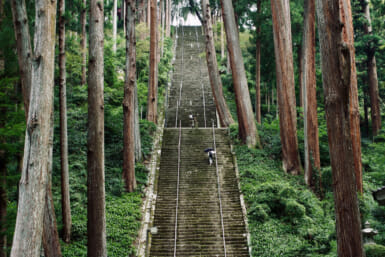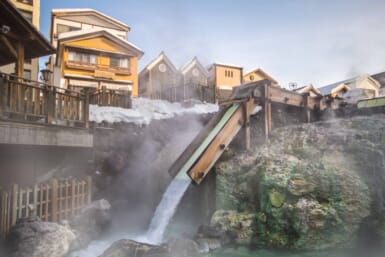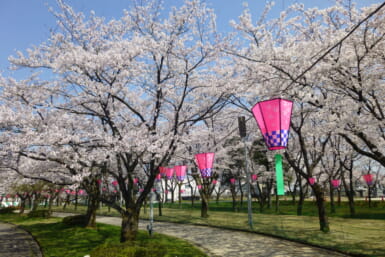by Michael Mahoney
While many of us were enjoying leftovers, lingering houseguests and unbelievable Boxing Day discounts on Dec. 26, 2004, people in Thailand and Indonesia—top vacation spots for holiday travelers from Japan—were picking up pieces of their homes, businesses and searching for lost loved ones.
Now, three years after the tsunami that killed 180,000 and left 1.8 million homeless, many of our favorite vacation destinations in Southeast Asia have been restored to their pre-tsunami splendor: the beaches are clean; the hotels sparkle; the restaurants once again dish up our favorite drinks and curries. Some places, particularly Phuket, Thailand, have come out bigger and better than before.
Although the road to recovery hasn’t been easy for any of the places affected, it is fascinating to see how the rapid recovery has progressed—and stalled—over the past three years, notably in Thailand and Indonesia.
One year after the tsunami, many recovery measures had been initiated, although much was still left to be done.
According to a UN report on the tsunami recovery, “devastation [was] still a part of […] life” for many people in tsunami-stricken areas. Particularly in Indonesia and Thailand, thousands continued to live in tents or temporary shelters, thousands more remained jobless, buildings remained piles of rubble, roads and ports were in disrepair and general living conditions were poor. Reasons for the slow progress varied: in Indonesia, many people lost their property deeds in the tsunami, stalling land claims; other places simply didn’t have enough resources or trained workers to complete the gigantic construction tasks at hand; other communities were made to wait for months while NGOs and governments ironed out details for development plans.
At first, the tourism industry in Thailand suffered severely: in January 2005 resorts in Phuket had occupancy rates as low as 10 percent. However, towards the end of the year Phuket—a major tourist hub along the tsunami-stricken Andaman Coast—had made remarkable progress and, by many accounts, tourism numbers had been much improved by the end of the year.
Helen Bottomley visited Phuket one year and one month after the tsunami. Upon entering Thailand, a tour guide told her that “Phuket had been through the washing machine” and had come out better-and cleaner- than ever, thanks to her country’s generous donations. Indeed, formerly dingy hotels had been entirely rebuilt, facilities improved and everything from beach chairs to umbrellas were brand-new and beautiful. According to Bottomley, the main tourist road by the beach had been perfectly cleared, and tourism numbers seemed healthy, as her plane was full of tourists and the tickets had once again been hard to come by.
“You wouldn’t have known that there had been a tsunami there,” she said. “The beaches were spotless.” But she added that, on the side roads away from the beach, there was still some visible damage—large piles of debris, undoubtedly left over from tsunami damage.
Although thousands remained jobless, some progress was made in getting people back to work, thanks to UN and NGO efforts. In Indonesia, the UN’s “cash-for-work” initiatives gave residents muchneeded cash for their efforts in the reconstruction of their villages. Thanks to these earnings—as well as the small loans offered by NGOs—some small business owners there were able to reopen their businesses and shops as kiosks along the beaches.
Two years after the tsunami, results were mixed. Progress was undoubtedly made in key tourist areas of Thailand and Indonesia, while smaller, less-visited places remained in ruins.
Aceh—the province in Indonesia hardest hit by the tsunami—had some signs of improvement, although many villages in the region were still largely in disrepair. Over half of the homes slated for construction had been built, however most were uninhabitable due to their lack of electricity and running water. Despite “cash-for-work” measures, thousands of people remained unemployed, and their general lack of construction experience rendered them unable to assist with the massive reconstruction projects. Furthermore, a notable percentage of the aid sent from abroad was rumored to have been lost to corruption, mismanagement and squabbles with the government.
On the other hand, UNICEF had been successful in taking care of 5,000 tsunami orphans in the region, and succeeded in rebuilding or repairing over 1,100 schools, “built better” institutions that included better hygienic facilities and playgrounds than the schools before them.
Thailand, however, seemed to fare far better at the two-year point than Indonesia, as rebuilding continued to make key tourist areas better than before and tourism numbers continued to rise.
At this point, both Indonesia and Thailand had made remarkable progress in their post-tsunami recoveries.
Despite a bleak outlook a year ago, Aceh, Indonesia has made a remarkable recovery in the last year. According to Kuntoro Mangkusubroto, a government director for the recovery in Aceh, by November 100,000 out of 120,000 homes were rebuilt, a sufficient number of schools were completed, 64,000 hectares of agricultural land were restored and the number of clinics doubled the government’s required number. Furthermore, previous issues with corruption and misappropriation of received aid seem to have ended, thanks to a Recovery Assessment Monitoring System.
Echoing many of Bottomley’s words, Midori Satoh of the Tourism Authority of Thailand affi rmed that the tsunami-effected areas of Phuket County in Thailand were now back to normal, if not better than ever.
“I have been there myself […] I have spoken with many hotel owners. Everyone agrees that everything is better than before!” she emphatically stated. “Really, there are no problems now. Things have returned to normal.”
Although most of the physical damage has been repaired, the tsunami has had a lasting impact on the consciousnesses of tourists.
Echoing many other tourists to Southeast Asia, Bottomley admitted that she had felt concerns about the possibility of another tsunami hitting while she was in Thailand. She had wanted to choose a hotel on high ground, and was relieved when she and her vacation pals ended up in a hillside resort.
“Before I went, I was worried about it. But while I was there I didn’t think about [a tsunami]”, she said.
Peter O’Keefe, an English teacher in Fukushima who visited Malaysia two years after the tsunami struck, admitted, “honestly, when I looked out onto the ocean, occasionally I thought, ‘that big wave isn’t a tsunami, right?’”
Satoh understands that tourists may still be a little jittery about visiting Thailand, out of fear of another tsunami. But she emphasized that, with a new detection system in place as well as thorough education about tsunami detection, the area is much better equipped now than before to foresee and react in the event of another catastrophe.
“The facilities are now so nice […] and there are so many new activities to experience. Should people go? Absolutely!”

